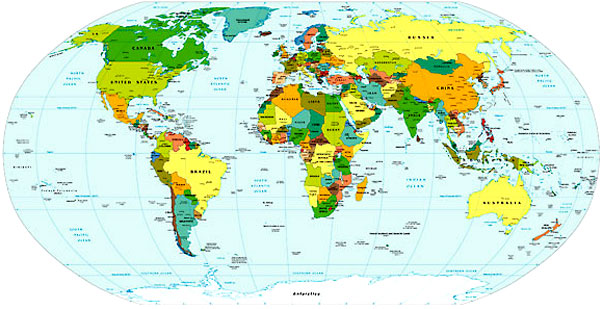 India. It’s such a large idea. I don’t feel that I can do it anything approaching justice in a little posting here. I feel like it’s one of the places that has a bunch of associations that you can’t quite escape from. Seventh largest in area, second largest in population, and home to four major world religions, at the same time as being early outposts of other major religions. It has an ocean named after it. It’s not just the British East India Company. And, in case you didn’t know, the central motif of the flag is a chakra—the 24 spokes correspond to the 24 hours of the day. Apparently this implies that there is life in movement, and death in stagnation.
India. It’s such a large idea. I don’t feel that I can do it anything approaching justice in a little posting here. I feel like it’s one of the places that has a bunch of associations that you can’t quite escape from. Seventh largest in area, second largest in population, and home to four major world religions, at the same time as being early outposts of other major religions. It has an ocean named after it. It’s not just the British East India Company. And, in case you didn’t know, the central motif of the flag is a chakra—the 24 spokes correspond to the 24 hours of the day. Apparently this implies that there is life in movement, and death in stagnation. I feel like India would be one of those countries to understand through food: the differences between curries in different regions, the different ingredients and how they line up with the different cultural identities. The ceremony around drinking tea, or drinking chai. The ways herbs and spices are used—and why those spices were so valuable to the rest of the world.
 For instance, in the north of India they use a lot more dairy products—the gravies are dairy cased. In the north the cuisine features a lot of flat breads, and they also have samosas. The staples are generally lentils, vegetables and bread, and the meat dishes arrived with Muslim influence in the country.
For instance, in the north of India they use a lot more dairy products—the gravies are dairy cased. In the north the cuisine features a lot of flat breads, and they also have samosas. The staples are generally lentils, vegetables and bread, and the meat dishes arrived with Muslim influence in the country.In the east, think about desserts—think of something like ricotta cheese combined with semolina, think sugar syrups and maybe some coconut. Think of things a little bit fried. And then there’s rice—the stable in this region, served with side dishes of vegetables, and maybe some fish.
The south is all about rice, with lots of coconut, and lots of pickles. A fan of bhaji (that is, onion pakora)? That’s from the south as well.
Then there’s the west: the Gujarati are in the west, and Gujarati cuisine is primarily vegetarian. (I have met a number of people from Gujarati background who have never eaten meat.) Goan cuisine, also in the West, is influenced by Portuguese foods—beef and pork are both popular, while they’re not as common in other areas of a nation whose largest religious groups are Hindu and Muslim.
Obviously this is simplification in the extreme—but it’s interesting to think through the differences within a large nation. And food really is a big part of religious and social identity—not just in India, but everywhere. But in India, about a third of the population is vegetarian. Spices like turmeric, cardamom, pepper and mustard have been harvested in the region for over 5000 years. When tomatoes, chilli and potatoes arrived from the new world, Indians quickly found uses for them in their own food traditions. Islamic rule brought with it gravy, kebabs, and a slew of fruits—apricot, melon, peaches, plum, while the British, alongside the Portuguese, introduced the idea of baking. Anyone who has ever moved from one country to another knows how much of national identity can be bound up in what comes from the kitchen.
Today’s poem from India comes from The Vintage Book of Contemporary World Poetry—it’s by the poet Jayanta Mahapatra.
Main Street Temple, Puri
Children, brown as earth, continue to laugh away
at cripples and mating mongrels.
Nobody ever bothers about the,
The temple points to unending rhythm.
On the dusty street the colour of shorn scalp
there are things moving all the time
and yet nothing seems to go away from sight.
Injuries drowsy with the heat.
And that sky there,
claimed by inviolable authority,
hanging on to its crutches of silence.
—Jayanta Mahapatra
from The Vintage Book of Contemporary World Poetry


2 comments:
Great article.. http://www.peopleforever.org/community.aspx?communityid=64
Thanks! I'm always frustrated I have so little time to get into any one country. I'm glad people enjoy the articles anyway. Happy Independence Day.
Post a Comment